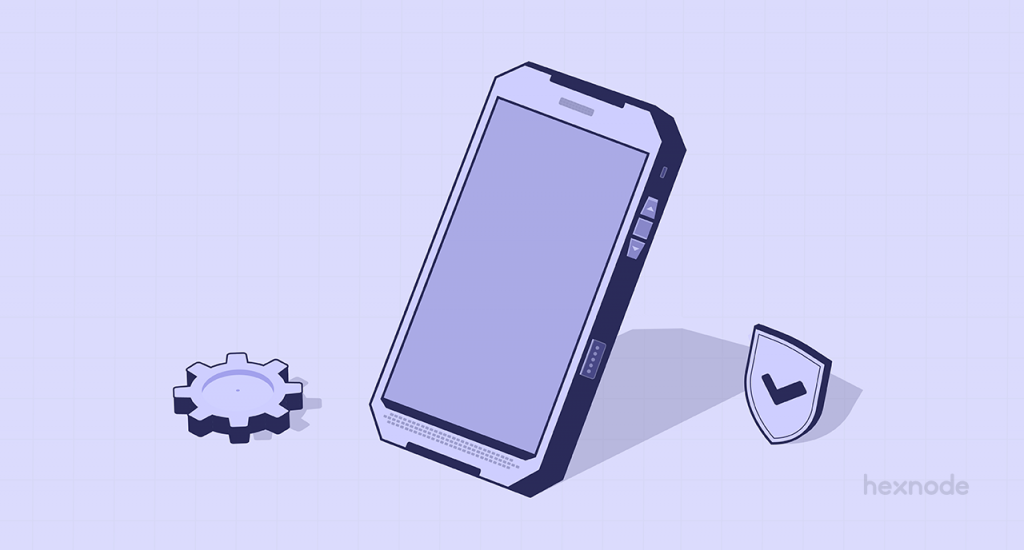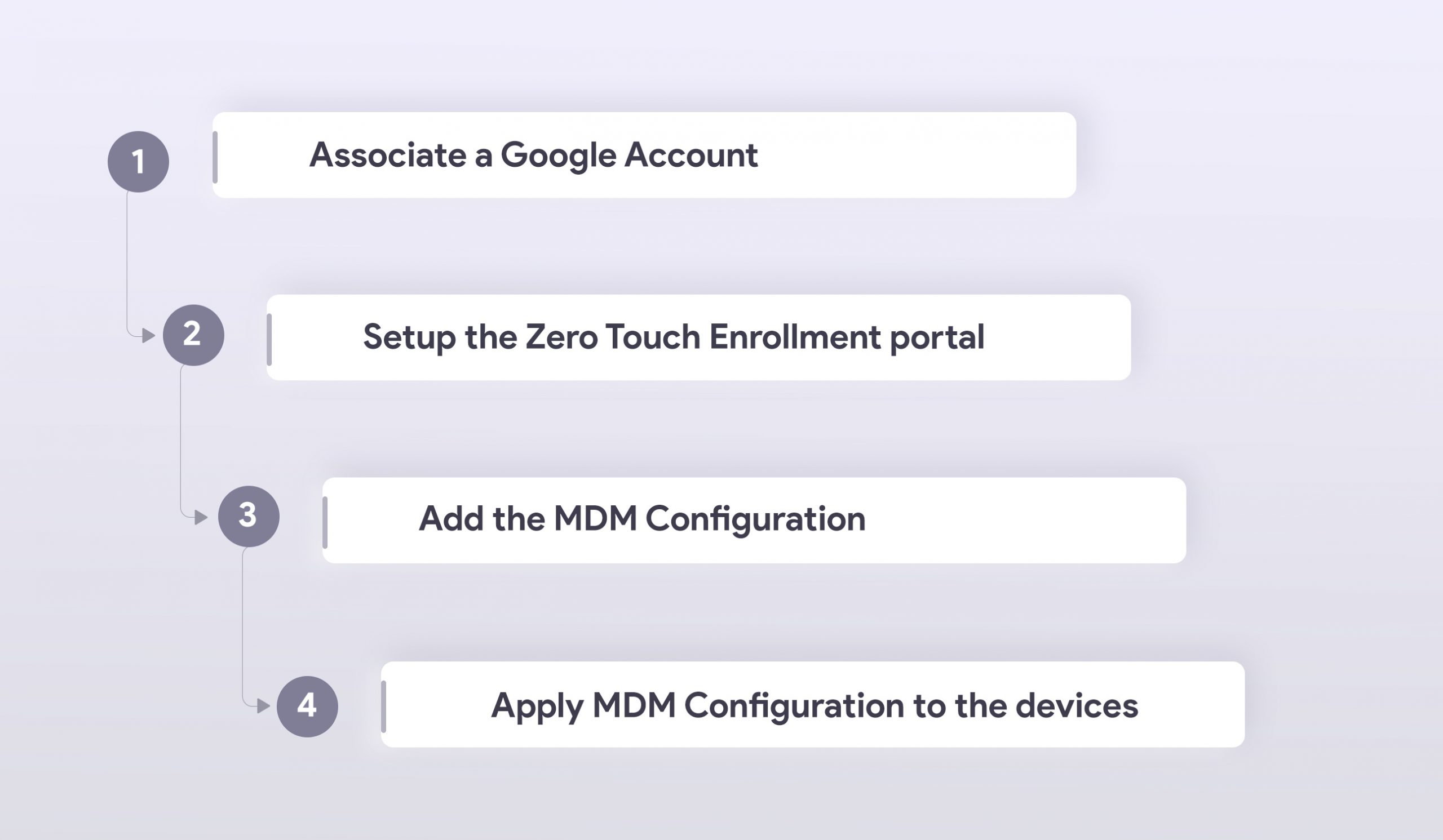How to set up Nokia HMD Global devices using Hexnode
Nokia HMD Global rugged devices can be set up with the help of a UEM vendor like Hexnode.

Get fresh insights, pro tips, and thought starters–only the best of posts for you.
Wayne Thompson
May 19, 2023
12 min read

When it comes to the enterprise, security is a top priority. For those working in tough environments, rugged devices are often the go-to choice. Nokia HMD Global rugged phones are popular due to their ability to withstand harsh environmental conditions. The smartphone has built-in security features, but additional measures may be needed for optimal protection. It is crucial to protect these phones from physical threats, malware, outdated software, and user error.
For businesses, there are many benefits to using Nokia HMD Global rugged mobile phones. Here are some of the key benefits:
One of the main advantages is their durability and reliability. The phone is built to withstand drops, water, dust, extreme temperatures, and other physical threats. Furthermore, it is also compliant with MIL-STD-810H military-grade standards and IP68 water and dust resistance rating, making them suitable for use in harsh environments.
Another advantage of the device is their long battery life. The smartphone comes with a powerful battery that can last up to two days on a single charge, which is crucial for workers who need their devices to last all day without requiring frequent recharging.
Nokia HMD Global rugged devices also come with a variety of features that enhance productivity. These include wireless charging, support for productivity apps, voice control, and a customizable My Phone app that makes it easy to manage and control devices remotely. The devices also support fast 5G connectivity, which is essential for workers who need to access data quickly and efficiently.
Security is a top priority for Nokia HMD Global’s rugged devices. These devices come with multiple layers of defense-grade security, including biometric authentication, encryption, and secure boot. They also come with a range of tools and services that make it easy to manage and control devices remotely, including zero-touch enrollment, over-the-air updates, and enterprise-grade data protection.

Managing rugged devices is by no means a walk in the park. So, we’ve put together this rugged device management toolkit to help your company adopt the right rugged device management strategy.
Download the resource kitThe Nokia HMD Global smartphone is suitable for use in a variety of scenarios and industries. These devices are ideal for workers in construction, manufacturing, logistics, and other industries that require a device that can withstand harsh environments. For example:
A construction business worker needs a device that can withstand harsh environments, including exposure to dust, dirt, and water. Nokia HMD Global has engineered rugged phones that meet MIL-STD-810H military-grade standards and boast an IP68 water and dust resistance rating, making them well-suited for construction sites. Additionally, these phones can be equipped with productivity apps and other tools to facilitate task management, progress tracking, and team communication.
Manufacturing company workers need devices that can handle the rigors of a fast-paced production environment. Designed to endure drops, shocks, and vibrations, Nokia HMD Global’s rugged devices feature extended battery life, enabling workers to stay connected throughout the day. These devices also serve as valuable tools for inventory management, quality control, and other activities that demand real-time data access.
Marking a significant milestone, HMD Global unveiled their latest masterpiece on May 3rd, 2023: the Nokia XR21, a remarkable addition to their rugged smartphone lineup. Continuing the legacy of its predecessors, the Nokia XR21 redefines the boundaries of durability, performance, and security.
Here are some of the key features of the Nokia XR21:
Hardware Features:
Software and Security Features:
Some of the security challenges that organizations using Nokia HMD Global rugged devices may face are:
As with any computing device, the Nokia HMD Global rugged smartphone is susceptible to malware and virus attacks. These can compromise the security of the device and the data it contains. It is important to implement robust security protocols, such as firewalls, antivirus software, and regular software updates, to protect against these threats.
Outdated software can leave devices vulnerable to security breaches. It is important to keep Nokia HMD Global rugged devices up to date with the latest security patches and software updates to address any known vulnerabilities.
If a rugged device is lost or stolen there is a risk of data loss or theft. Thus, regularly tracking the location of rugged devices can help organizations ensure employee safety and prevent theft. While location tracking can be useful for asset tracking and employee safety, it can also be a privacy concern if not properly managed. So, organizations must ensure that location tracking is enabled only for authorized purposes and that data is encrypted and secured.
Nokia HMD Global rugged devices can store sensitive data such as customer information, financial data, and intellectual property. It is important to implement strong encryption, access controls, and data backup procedures to protect against data loss or theft.
In today’s interconnected world, an unsecure network poses a significant threat to the security of rugged devices. In a remote field operation, rugged devices rely on an unsecured Wi-Fi network for data transmission. This leaves the phones vulnerable to potential data breaches and unauthorized access. To prevent unauthorized access to sensitive data, a company must ensure that it protects its devices with secure network protocols and VPNs.
In the event of technical issues or security breaches, troubleshooting can be a challenge in remote environments. It is important to have a robust support system in place, including remote troubleshooting and repair capabilities, to ensure that devices can be quickly and efficiently restored to full functionality.
Hexnode UEM offers support for Nokia HMD Global rugged phones that are ideal for working outdoors. It provides several features and capabilities, including OEMConfig support.
Furthermore, the UEM solution provides a user-friendly interface for configuring OEM policies and settings, making it easy for administrators to customize device settings according to their organization’s requirements. Some of the features offered by Hexnode are:
Android Zero Touch Enrollment (ZTE) simplifies bulk enrollment of corporate owned Android devices, saving admins the tedious task of manually setting up devices. ZTE ensures that new devices are work-ready for users right out of the box and enrolls them with the UEM once they are switched on and connected to the network. Additionally, ZTE also offers powerful security benefits by reducing the risk of unintentional user errors and preventing unauthorized users from joining the organization’s UEM environment.

Using Android Enterprise and Hexnode, enterprises can easily manage apps on their corporate devices. The ability to distribute apps via the managed Google Play Store or third-party app stores simplifies app distribution, while app updates can be scheduled and deployed remotely. Admins can also use app blocking and uninstallation capabilities to prevent the installation or use of unwanted apps on corporate devices, ensuring the security of company data.
Device manufacturers in Android Enterprise can use app configurations to pre-configure app settings and policies on their devices before deploying them to end-users. This feature saves time and effort for IT administrators as it ensures that apps are pre-configured with the desired settings and configurations. Additionally, with OEM app configurations, organizations can customize app settings such as server URLs, default values, and specific app behaviors to meet their specific requirements. OEM app configurations supported by Android Enterprise can be managed through Hexnode UEM. By leveraging this, businesses can streamline app deployment and management, improving productivity and security.
Hexnode UEM provides information on OS versions and enables enterprises to enforce or schedule updates remotely. Users can schedule and automate OS updates, deploy them to specific groups, and delay them for 30 days, reducing corporate bandwidth load. Furthermore, it allows IT to remotely deploy OS updates to specific Android devices, providing a central console for updates.
Kiosk mode locks the device to a single app or a set of apps, disabling access to other device functionalities. Hexnode UEM provides a simple and effective way to set up kiosk mode on Android devices, allowing IT administrators to configure various settings such as app configurations, branding, and device restrictions. Hexnode enables IT administrators to remotely set up kiosk mode, saving time and effort. Additionally, Hexnode supports advanced kiosk mode features such as peripheral lockdown, screen pinning, and custom launcher.
Hexnode UEM provides the ability to create and configure VPN profiles for Android devices, enabling remote access to the organization’s private network. A VPN connection profile is used to establish a secure connection between the device and the VPN server, creating a virtual private network within the public network, thus enhancing data security during transmission.
Enabling location tracking and geofencing can help organizations enhance their device management and security. Location tracking can be configured using policies that control the automatic tracking and set the tracking interval, with the option to restrict user modifications once the policy is implemented. Meanwhile, geofencing allows administrators to create virtual boundaries on maps, triggering alerts and marking devices as non-compliant when they exit the designated area.
Hexnode UEM provides comprehensive remote management capabilities for Nokia HMD Global phones. IT admins of a business can remotely manage and monitor device usage and enforce security policies over-the-air. In case of a lost device, Hexnode’s lost mode feature can be enabled remotely to help locate the device. Furthermore, it locks the device with a custom message, displays a contact number to call if found, and tracks the device’s last known location. In the worst-case scenario where the device is irretrievable or stolen, the remote wipe feature can be used to erase all data from the device, ensuring that sensitive information does not fall into the wrong hands.
Hexnode offers a wide range of data security capabilities to protect enterprise data. It allows for secure browsing by implementing web filtering policies and ensures secure network connections. Furthermore, it provides secure file sharing options to keep data secure while sharing files.
Hexnode provides a comprehensive range of Mobile Threat Defense (MTD) features, including web filtering, anti-malware, app security, network security, real-time threat detection, and device encryption. These features protect mobile devices from malicious websites, malware, app vulnerabilities, insecure network connections, any signs of compromise, and data breaches.
Overall, Nokia HMD Global rugged devices withstand tough environments and offer features that enhance productivity and security. These devices suit industries like construction and manufacturing, with ruggedness for fast-paced environments. The new Nokia XR21 exemplifies this with features like long-lasting battery, water and dust resistance, and biometric authentication. However, organizations using these rugged devices may face some security challenges such as malware, outdated software, and location tracking. It’s important to implement robust security protocols and to keep devices up to date to ensure optimal protection against potential threats.
Sign up for a 14-day free trial to discover how Hexnode can help your organization manage and monitor rugged devices.
Try out now